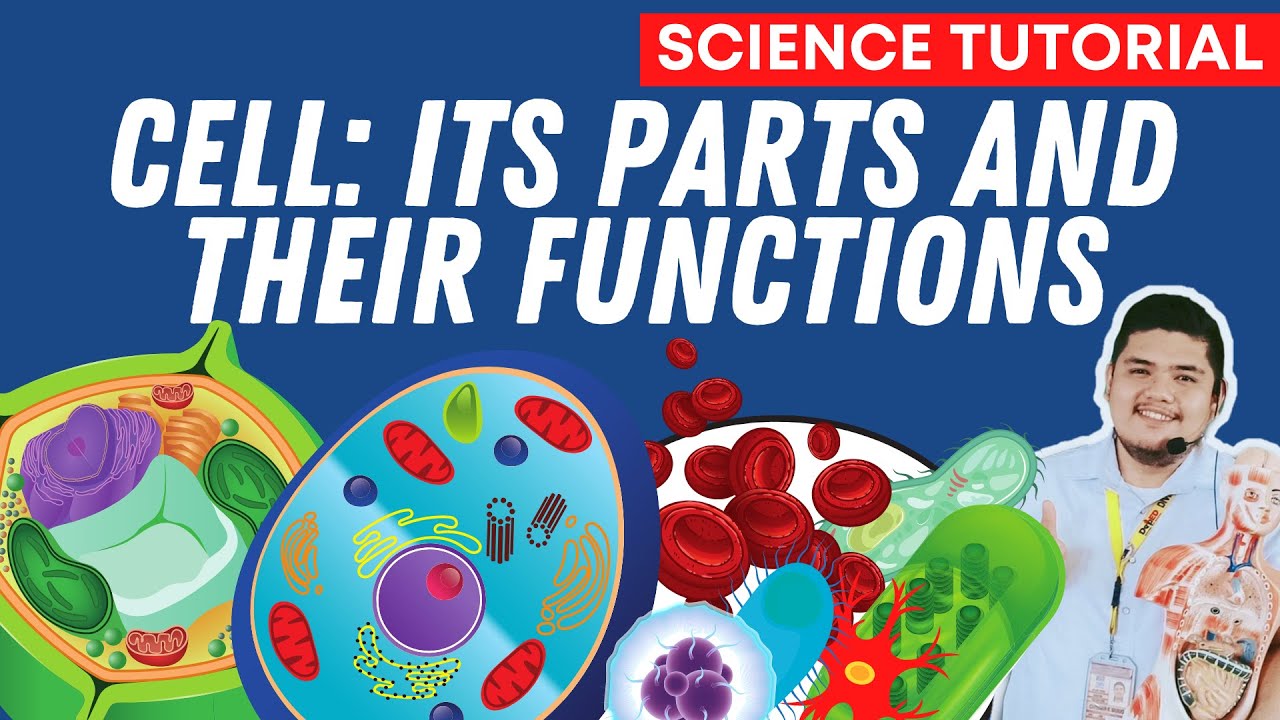biologi struktur sel SUBTITLE BAHASA
Summary
TLDRThis video explains the fundamental components and functions of cells. It covers the two types of cells: eukaryotic and prokaryotic. Eukaryotic cells are complex and contain organelles like the nucleus, mitochondria, and ribosomes, while prokaryotic cells lack a nucleus and membrane-bound organelles. Key cell structures such as the cytoplasm, Golgi apparatus, lysosomes, and vacuoles are explored, each with its distinct role in cell functions. The video also highlights special features like chloroplasts in plant cells and flagella in some bacteria, offering a comprehensive overview of the cellular world.
Takeaways
- 😀 Cells are the smallest living units of organisms and share three key components: cell membrane, cytoplasm, and DNA.
- 😀 Eukaryotic cells are complex and contain organelles such as the nucleus, while prokaryotic cells are simpler and lack a nucleus.
- 😀 The nucleus is the control center of the cell, containing DNA that dictates cell functions and behaviors.
- 😀 Ribosomes, found inside or attached to the endoplasmic reticulum (ER), are responsible for synthesizing proteins.
- 😀 The endoplasmic reticulum (ER) serves as a membrane-enclosed passageway for transporting materials, including proteins.
- 😀 The Golgi apparatus customizes proteins by folding them into usable shapes or adding lipids and carbohydrates.
- 😀 Vacuoles are sac-like structures that store materials, with the central vacuole in plant cells primarily storing water.
- 😀 Lysosomes act as garbage collectors, breaking down damaged or worn-out cell parts using enzymes.
- 😀 Mitochondria are the powerhouse of cells, generating ATP molecules that provide energy for cellular activities.
- 😀 Plant cells have chloroplasts for photosynthesis, while both plant and animal cells have mitochondria to generate energy.
Q & A
What are the three key components that all cells have in common?
-All cells, regardless of type, have a cell membrane, cytoplasm, and DNA. The cell membrane separates the inside of the cell from its environment, cytoplasm is a jelly-like fluid, and DNA is the cell's genetic material.
What is the primary difference between eukaryotic and prokaryotic cells?
-Eukaryotic cells have membrane-bound organelles, including a nucleus, and are found in more complex organisms such as plants and animals. Prokaryotic cells lack a nucleus and membrane-bound organelles and are usually unicellular organisms like bacteria.
What is the function of the nucleus in a cell?
-The nucleus serves as the control center of the cell. It contains DNA, which dictates the cell's functions and behaviors. The nucleus also contains a nucleolus where ribosomes are made.
What are ribosomes, and what is their function in the cell?
-Ribosomes are organelles responsible for synthesizing proteins. They can be found freely in the cytoplasm or attached to the endoplasmic reticulum (ER), where they play a crucial role in protein production.
What are the two types of endoplasmic reticulum (ER), and how do they differ?
-The two types of endoplasmic reticulum are rough ER and smooth ER. Rough ER has ribosomes attached to its surface, while smooth ER does not. Rough ER is involved in protein synthesis, while smooth ER is involved in lipid synthesis and detoxification.
What is the Golgi apparatus, and what role does it play in the cell?
-The Golgi apparatus, or Golgi body, is responsible for modifying, sorting, and packaging proteins and lipids from the endoplasmic reticulum. It customizes proteins by folding them or adding other molecules like lipids or carbohydrates.
What are vacuoles, and what is their function in cells?
-Vacuoles are sac-like structures that store various materials. In plant cells, the central vacuole stores water, while in animal cells, vacuoles can store food, waste, or other substances.
What role do mitochondria play in the cell?
-Mitochondria are the powerhouse of the cell. They generate ATP through cellular respiration, providing energy for the cell's activities. Cells that require more energy tend to have more mitochondria.
How does the cytoskeleton contribute to the cell?
-The cytoskeleton maintains the shape of the cell and facilitates movement within the cell. It includes microfilaments (protein threads) and microtubules (hollow tubes).
What is the role of chloroplasts in plant cells?
-Chloroplasts are organelles found in plant cells where photosynthesis occurs. They contain chlorophyll, a green pigment that captures sunlight and converts it into chemical energy.
What is the difference between plant and animal cells in terms of structure?
-Plant cells have a cell wall, a large central vacuole, and chloroplasts, which are not found in animal cells. Animal cells, on the other hand, lack a cell wall and chloroplasts, and typically have smaller vacuoles.
What are cilia, and how do they function in the body?
-Cilia are hair-like projections found on some cells, such as those in the respiratory tract. They move in waves to trap and expel inhaled particles, aiding in the removal of debris from the airways.
What is a flagellum, and in which human cell is it found?
-A flagellum is a tail-like structure that helps cells move. The only human cell with a flagellum is the sperm cell, where it aids in propulsion.
Outlines

This section is available to paid users only. Please upgrade to access this part.
Upgrade NowMindmap

This section is available to paid users only. Please upgrade to access this part.
Upgrade NowKeywords

This section is available to paid users only. Please upgrade to access this part.
Upgrade NowHighlights

This section is available to paid users only. Please upgrade to access this part.
Upgrade NowTranscripts

This section is available to paid users only. Please upgrade to access this part.
Upgrade NowBrowse More Related Video

SEL PART 1 / KOMPONEN KIMIAWI, STRUKTUR, FUNGSI SEL / BIOLOGI KELAS 11 / SITOLOGI / CELL STRUCTURE

PARTS AND FUNCTIONS OF A CELL SCIENCE 7 QUARTER 2 MODULE 3

Intro To Cells: Animals & Plants | Cells | Biology | FuseSchool

THE CELL Part 1 : Biochemistry for Nursing Students

Apa itu Sistem Imun ?

Overview of Cell Structure
5.0 / 5 (0 votes)